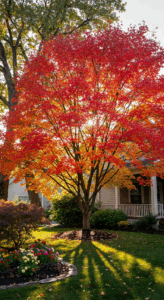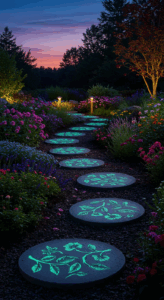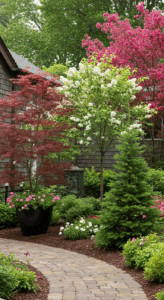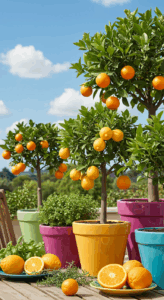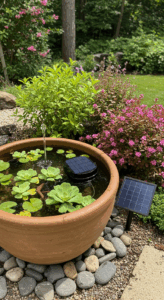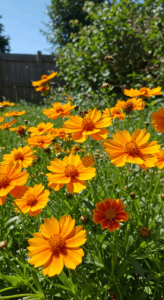1. The Magic of Shade: Why Some Herbs Thrive in Low Light

Many herbs have adapted to thrive in low-light conditions, making them ideal for shadier areas of your garden. Shade-loving herbs, such as mint, parsley, and chives, have evolved to grow in the understory of forests, where direct sunlight is scarce. These herbs often boast broader leaves that capture light more efficiently, allowing them to photosynthesize even in dim conditions. Additionally, the cooler microclimate of shady areas can help prevent stress during hotter months, leading to healthier plants with more robust flavors. When incorporating these herbs into your garden, consider factors such as soil quality and moisture, as shaded areas may retain water longer. With the right care, you can successfully cultivate a vibrant herb garden even in the gloomiest corners of your yard.
2. Minty Fresh: The Versatile Herb That Loves the Shadows

Minty Fresh is an incredibly versatile herb that thrives in shady conditions, making it perfect for less sunny gardens. Known for its refreshing aroma and flavor, mint can be used in a variety of culinary applications, from salads to beverages. Its rapid growth and spreading nature make it an excellent ground cover, effectively suppressing weeds in shaded areas. To cultivate mint successfully, ensure it receives consistent moisture and is planted in well-drained soil. Regular harvesting encourages bushier growth and prevents flowering, which can diminish its flavor. With numerous varieties available, including spearmint and peppermint, gardeners can easily find the perfect type to suit their taste and culinary needs, all while enjoying its lush green foliage that brightens up dim corners of the garden.
3. Parsley Power: A Nutrient-Rich Herb for Dim Gardens
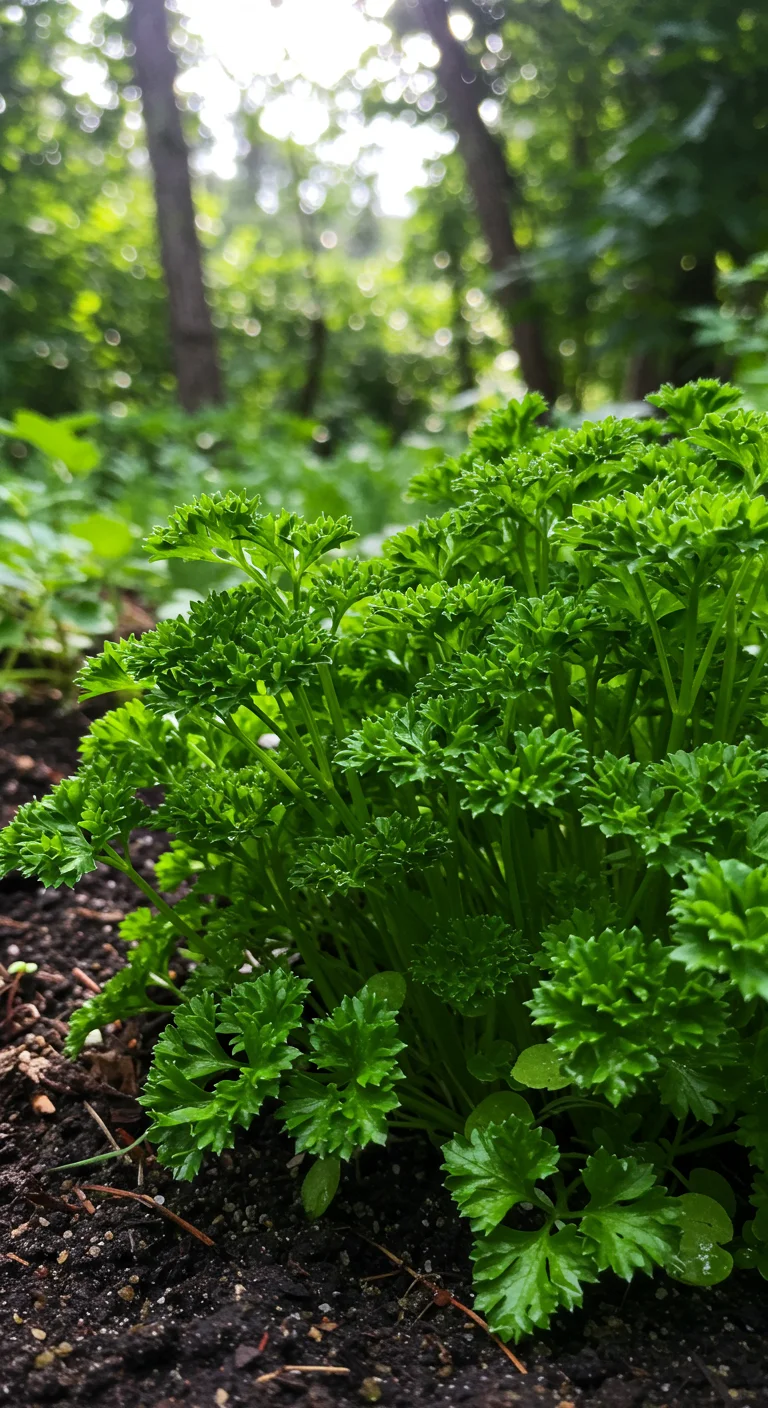
Parsley is not only a culinary staple but also a powerhouse of nutrients, making it an excellent addition to dim gardens. This hardy herb thrives in partial shade, allowing it to flourish where sunlight is limited. Rich in vitamins A, C, and K, parsley boosts the immune system and aids in digestion. It also contains antioxidants that combat free radicals, promoting overall health. For optimal growth, ensure the soil is well-drained and keep it consistently moist. Regular harvesting encourages bushier growth, and parsley can be easily integrated into various dishes, from salads to sauces. With its vibrant green leaves, parsley not only enhances flavor but also adds a splash of color to your shaded garden spaces.
4. Chive Your Way to Success: A Flavorful Addition to Shady Spaces

Chives (Allium schoenoprasum) are a delightful herb that thrive in shady areas, making them a perfect addition to gardens with less sunlight. Their slender, green leaves not only add a vibrant splash of color but also serve as a versatile culinary ingredient, enhancing salads, soups, and potato dishes with a mild onion flavor. Chives prefer moist, well-drained soil and can be easily propagated by dividing clumps every few years. Their ability to flourish in partial shade means they can be integrated alongside other shade-loving plants, creating a lush and aromatic garden space. Furthermore, the beautiful purple flowers that bloom in spring are not only attractive but also edible, adding a decorative touch to your dishes while attracting beneficial pollinators to your garden. With minimal care, chives can provide a continuous harvest throughout the growing season, making them a rewarding choice for shaded gardens.
5. The Resilient Cilantro: An Herb That Flourishes Away from the Sun
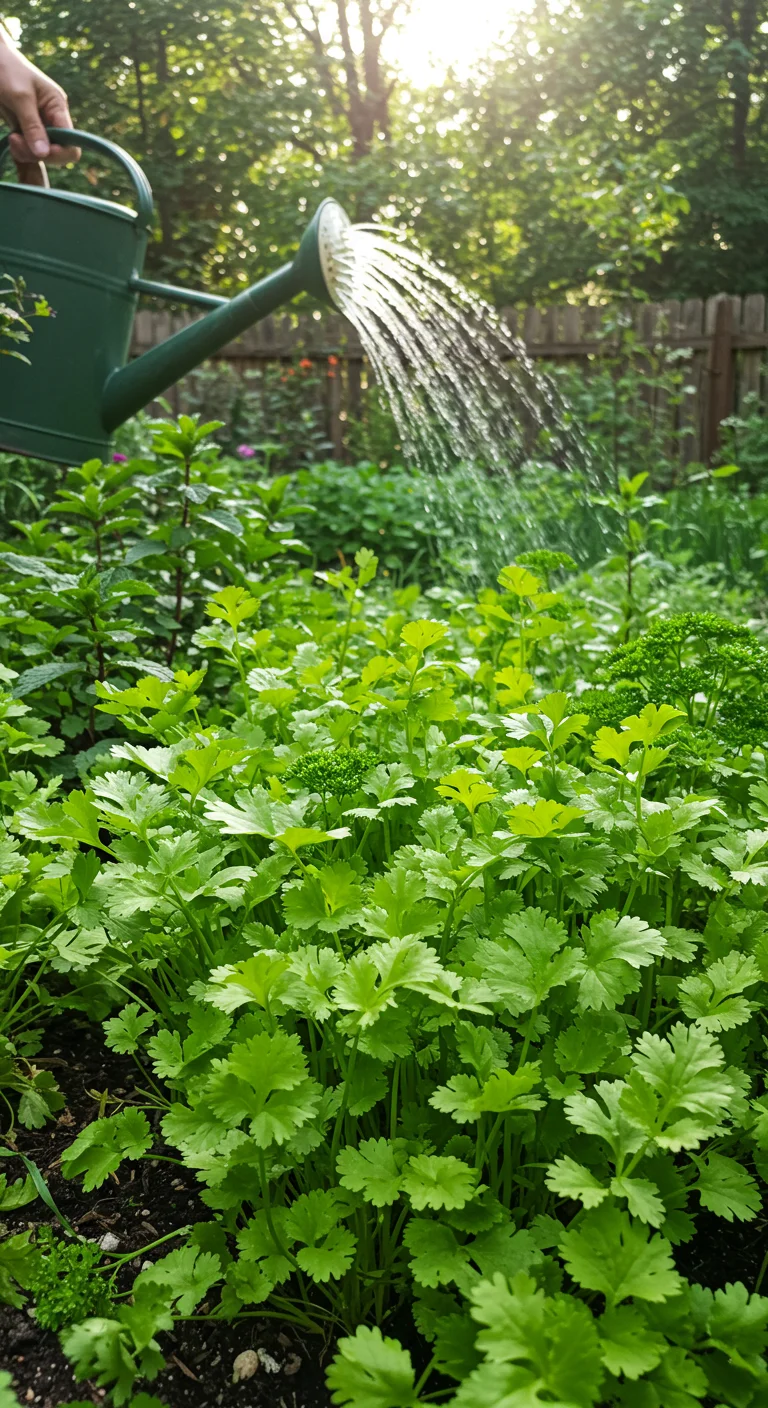
Cilantro, also known as coriander, is a versatile herb that thrives in partially shaded areas, making it a perfect fit for gardens lacking direct sunlight. This hardy herb can tolerate temperatures as low as 50°F (10°C) and prefers moist, well-draining soil rich in organic matter. For optimal growth, plant cilantro in a location that receives dappled sunlight or light shade for most of the day. Regular watering is essential, but be cautious not to overwater, as cilantro is susceptible to root rot. The leaves can be harvested once they reach a height of about 6 inches, and the plant can continue to produce throughout the growing season, providing fresh, flavorful leaves for culinary uses. With its resilience and adaptability, cilantro is an excellent addition to shaded gardens, offering both flavor and greenery.
6. Lemon Balm: A Bright Spot in the Shade

Lemon balm (Melissa officinalis) is an excellent herb for shady gardens, known for its bright green leaves and delightful citrus fragrance. This perennial plant thrives in partial to full shade, making it a perfect choice for those less sunny corners of your garden. Lemon balm is not only aesthetically pleasing but also offers culinary and medicinal benefits; its leaves can be used to enhance teas, salads, and desserts, while its calming properties are often utilized in herbal remedies for anxiety and sleep disorders. To cultivate lemon balm, ensure that the soil is well-drained and rich in organic matter, and keep it consistently moist. With little maintenance and regular harvesting, lemon balm can flourish in the shade, providing both beauty and utility for your outdoor space.
7. Thyme in the Shadows: How to Grow This Hardy Herb

Thyme is a resilient herb that thrives in shady environments, making it an excellent choice for less sunny gardens. To grow thyme successfully in the shadows, select a well-draining soil and amend it with organic matter to promote moisture retention. Plant thyme in a spot that receives partial sunlight, ideally with dappled light filtering through trees or taller plants. Space each thyme seedling about 12 inches apart to allow for adequate air circulation. Water regularly but avoid overwatering; thyme prefers slightly dry conditions. Pruning the herb during its active growth phase will encourage bushiness and enhance flavor. With minimal care, thyme’s aromatic leaves can be harvested throughout the growing season, adding a delightful touch to your culinary creations.
8. Oregano: The Italian Classic That Loves Shade
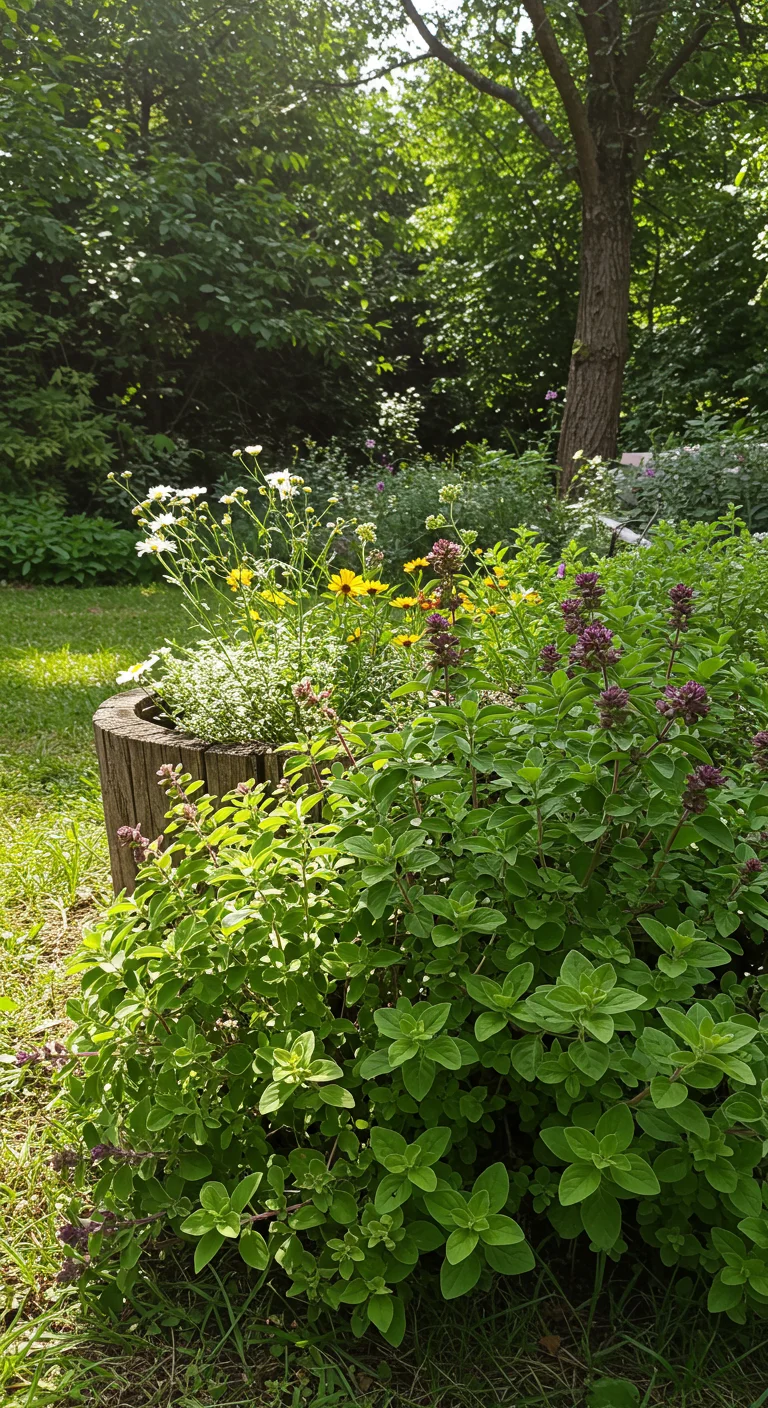
Oregano, an essential herb in Italian cuisine, thrives in semi-shaded areas, making it a versatile choice for gardens that don’t receive full sunlight. With its fragrant leaves and sturdy growth habit, oregano can easily adapt to a variety of soil types, although it prefers well-drained conditions. This perennial herb not only enhances dishes with its robust flavor but also attracts beneficial pollinators to your garden. When planting oregano, ensure it is spaced adequately to allow for airflow, which helps prevent mold in humid conditions. Regular trimming after flowering encourages bushier growth and enhances leaf production, so don’t hesitate to harvest often. Whether in a dedicated herb garden or interspersed among flowers, oregano proves to be both a culinary delight and a resilient shade-tolerant plant.
9. Sorrel: A Tasty Green That Thrives in Low Light
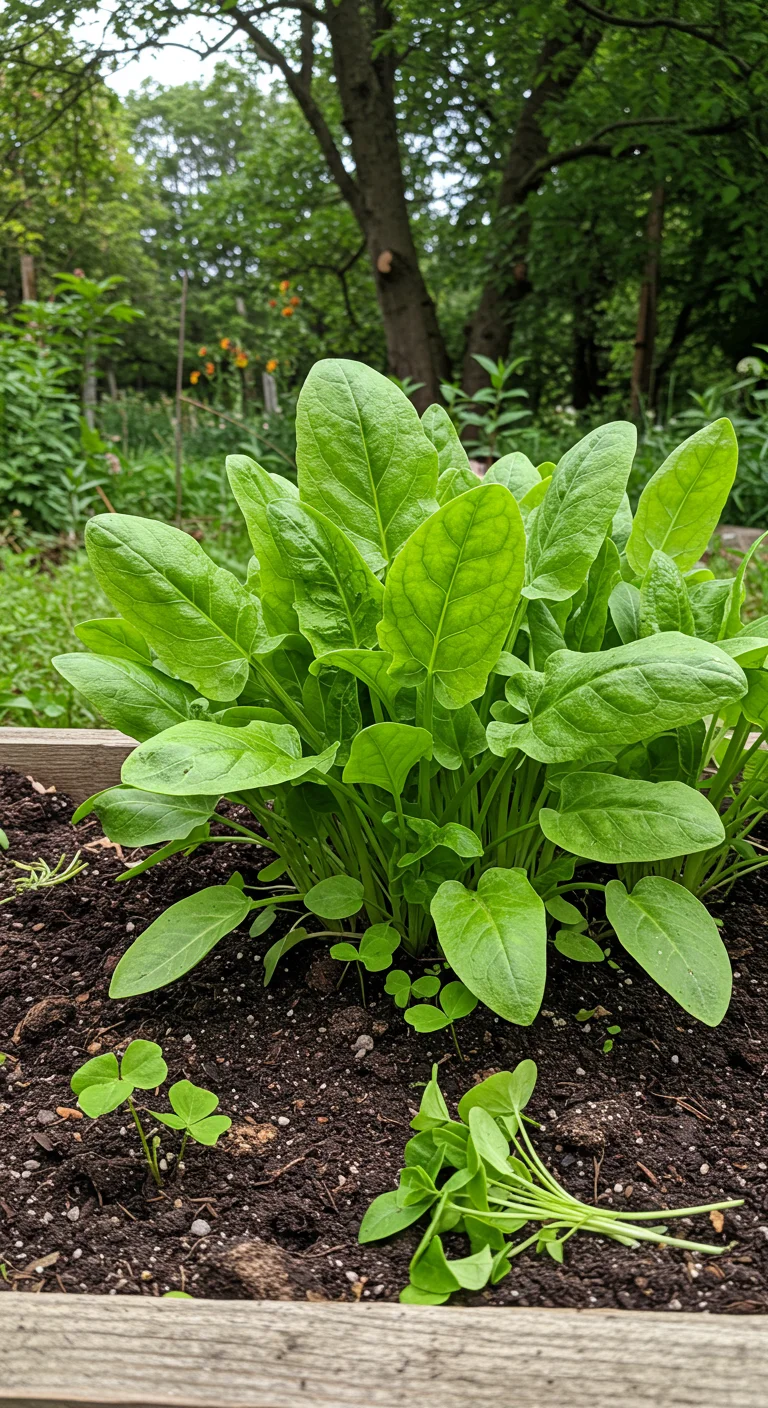
Sorrel (Rumex acetosa) is a versatile leafy green that adds a zesty, lemony flavor to various dishes, making it a fantastic choice for shaded gardens. Thriving in low-light conditions, sorrel can tolerate partial shade and will grow best in well-drained, moist soil enriched with organic matter. This perennial herb is not only easy to cultivate but also boasts a rapid growth rate, allowing for multiple harvests throughout the growing season. With its vibrant green leaves and arrow-shaped formation, sorrel can also serve as an attractive addition to your garden. Ideal for salads, soups, and sauces, sorrel is a delicious way to make use of less sunny areas while enhancing your culinary creations.
10. The Subtle Flavors of Tarragon: Shade’s Best-Kept Secret
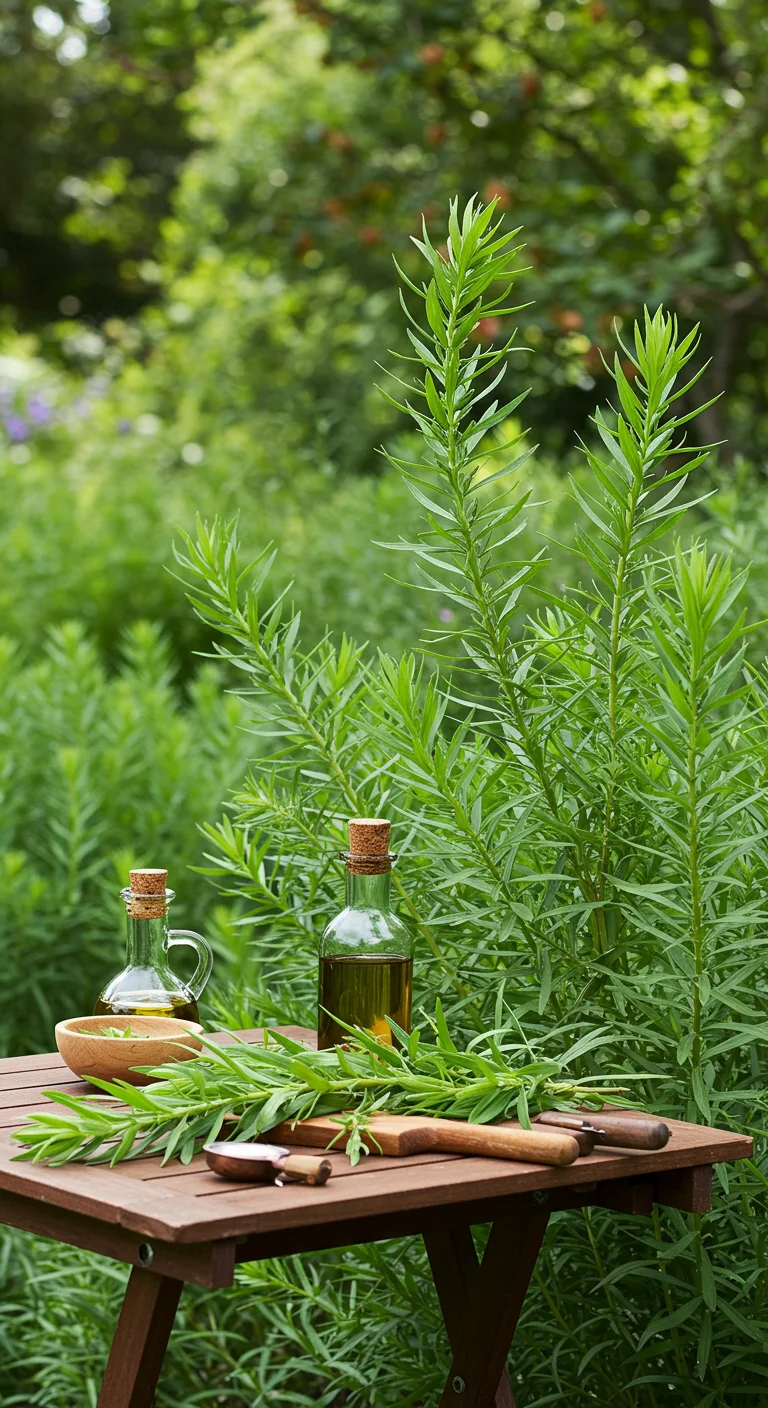
Tarragon, often overlooked in shade gardens, brings a unique anise-like flavor to culinary creations. This perennial herb thrives in partial to full shade, making it an ideal choice for less sunny spots. With its slender, feathery leaves, tarragon not only adds visual interest but also enhances dishes such as salad dressings, sauces, and roasted vegetables with its distinctive taste. To grow tarragon successfully, ensure the soil is well-drained and rich in organic matter. Regular pruning encourages bushier growth and prevents the plant from becoming leggy. Additionally, tarragon pairs beautifully with chicken and fish, and infusing oils or vinegars with its flavor can elevate your culinary repertoire, making it a secret ingredient worth cultivating in your shade garden.
11. Fennel: A Unique Herb for Your Shaded Garden
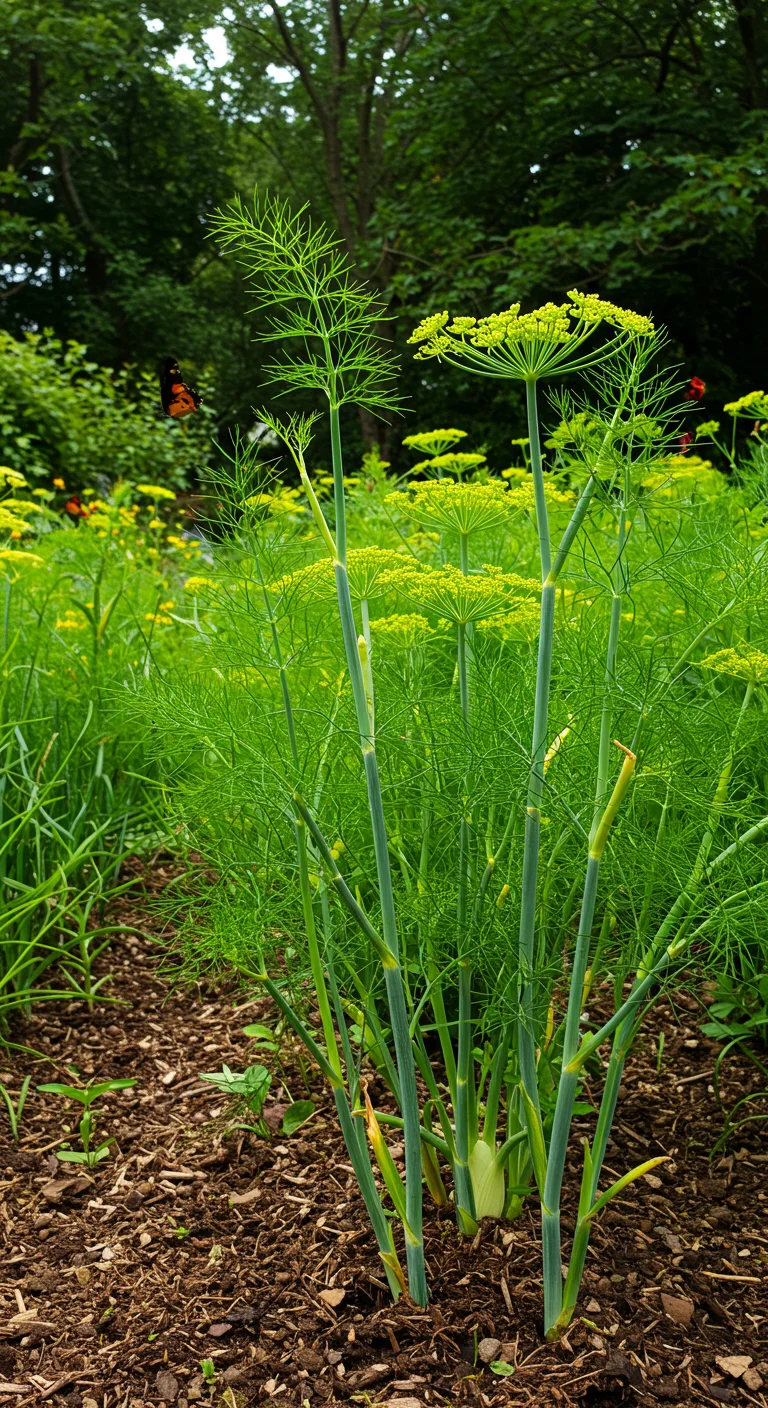
Fennel is a versatile herb that thrives in shaded gardens, offering both culinary and ornamental benefits. This hardy plant can grow up to 4 feet tall, producing feathery, bright green fronds that add a soft texture to your garden space. Fennel prefers well-drained soil enriched with organic matter, making it ideal for shaded areas where moisture retention is key. In addition to its unique anise-like flavor, fennel attracts beneficial insects, such as butterflies and pollinators, enhancing the biodiversity of your garden. Its flowers, which bloom in late summer, are not only beautiful but also edible, adding a delightful touch to salads and dishes. For optimal growth, plant fennel in a spot that receives partial shade, ensuring it receives some sunlight while keeping it cool during the hottest parts of the day.
12. The Bold Taste of Lovage: A Shade-Friendly Herb
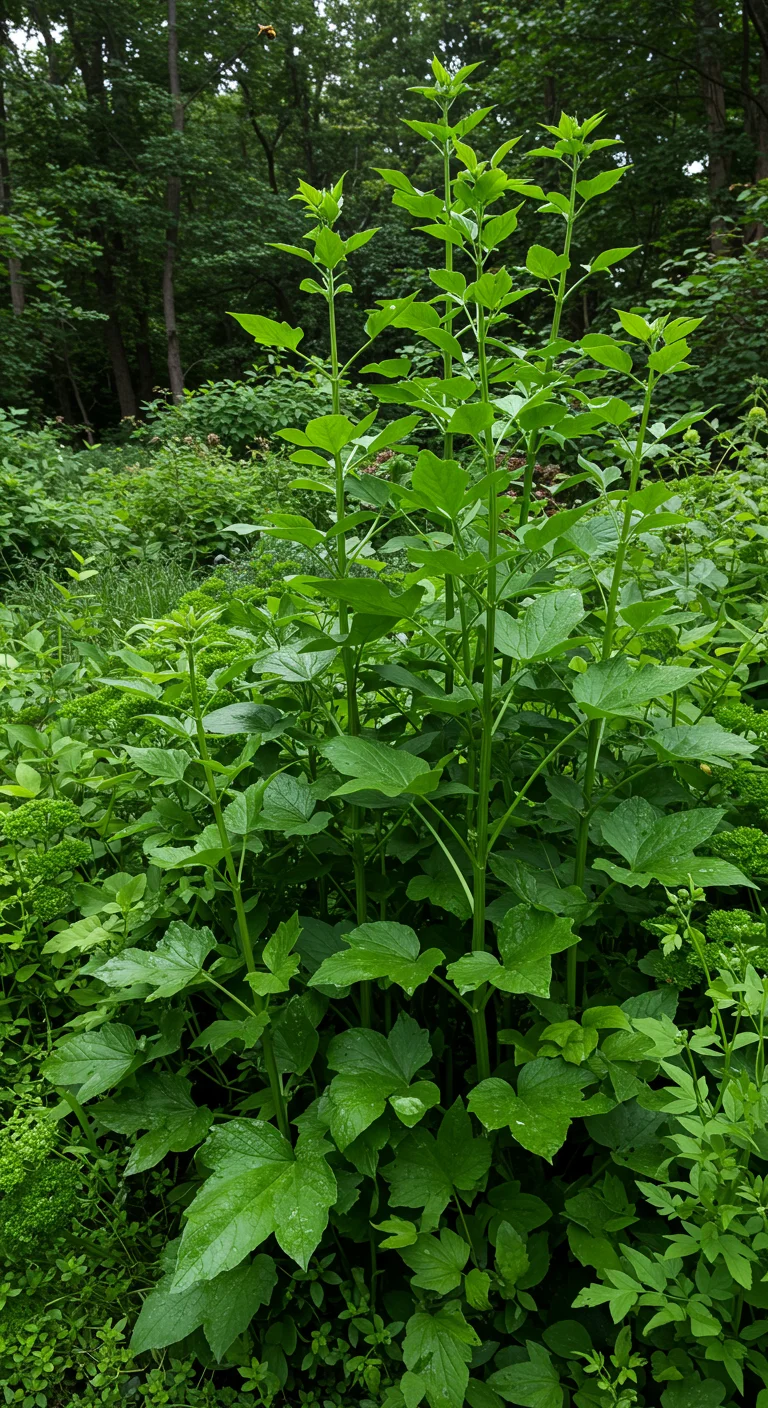
Lovage (Levisticum officinale) is a vibrant, aromatic herb that thrives in shaded areas, making it an excellent choice for less sunny gardens. Its tall, leafy stalks can reach heights of up to six feet and are adorned with glossy, green leaves that resemble those of celery. Lovage’s flavor is bold and reminiscent of a mix between parsley and celery, which makes it a fantastic addition to soups, stews, and salads. To cultivate lovage, ensure it receives moist, well-drained soil, and consider planting it near other shade-loving herbs to create a lush herb garden. This perennial herb not only adds a unique taste to culinary dishes but also attracts beneficial insects, enhancing the biodiversity of your garden environment.
13. Dill Delight: An Aromatic Herb for Shady Spots
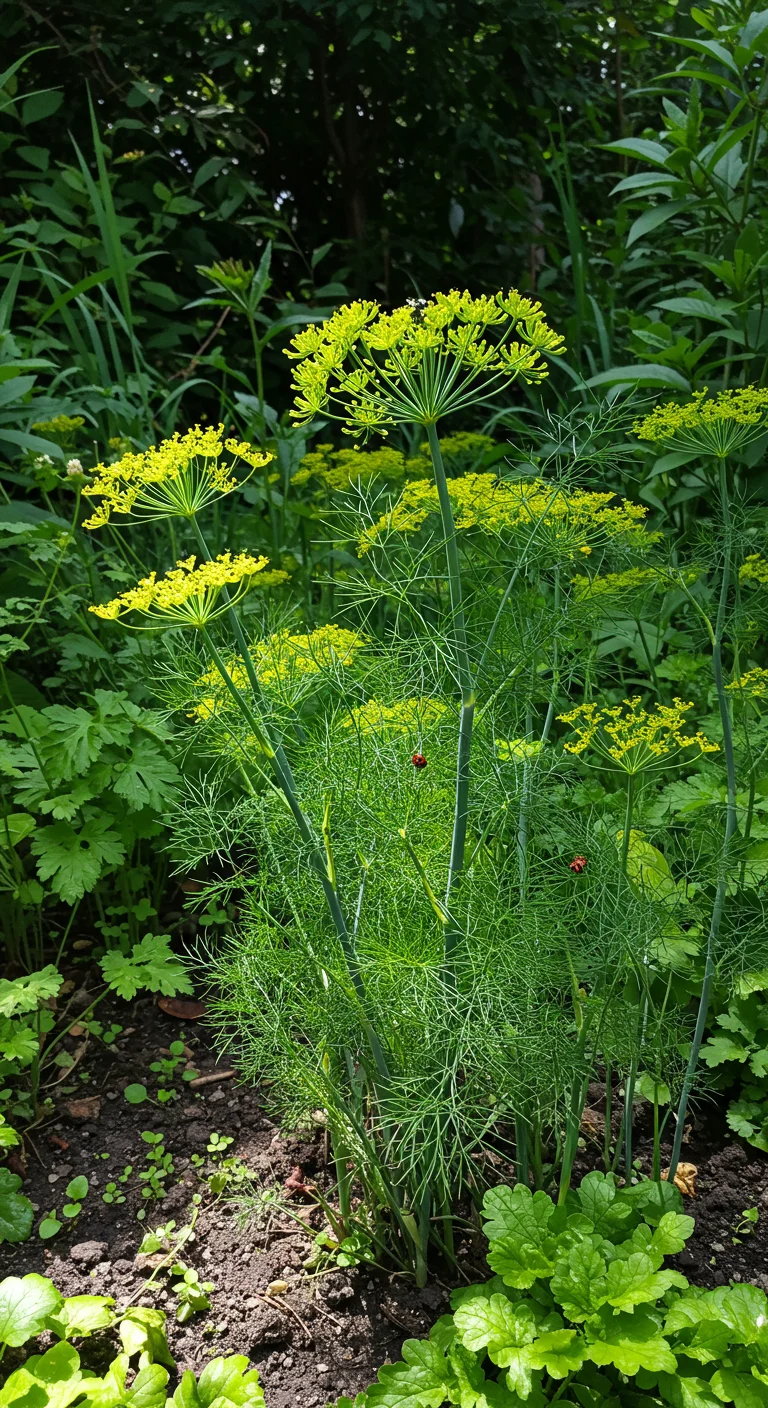
Dill, an aromatic herb known for its feathery green leaves and distinct flavor, thrives beautifully in shady spots, making it an excellent choice for less sunny gardens. This hardy annual prefers well-drained soil and moderate moisture, flourishing in partial shade where it can receive dappled sunlight throughout the day. Planting dill near taller plants can provide the necessary shade while allowing its vibrant foliage to create a lush backdrop. Additionally, dill attracts beneficial insects such as ladybugs and parasitic wasps, promoting a healthy garden ecosystem. Harvesting the leaves early in the growth cycle ensures a burst of flavor in culinary dishes, while the seeds can be collected for seasoning or future planting. With its unique taste and attractive appearance, dill is a delightful addition to any shady herb garden.
14. The Resilient Sage: How to Cultivate This Shade-Loving Herb
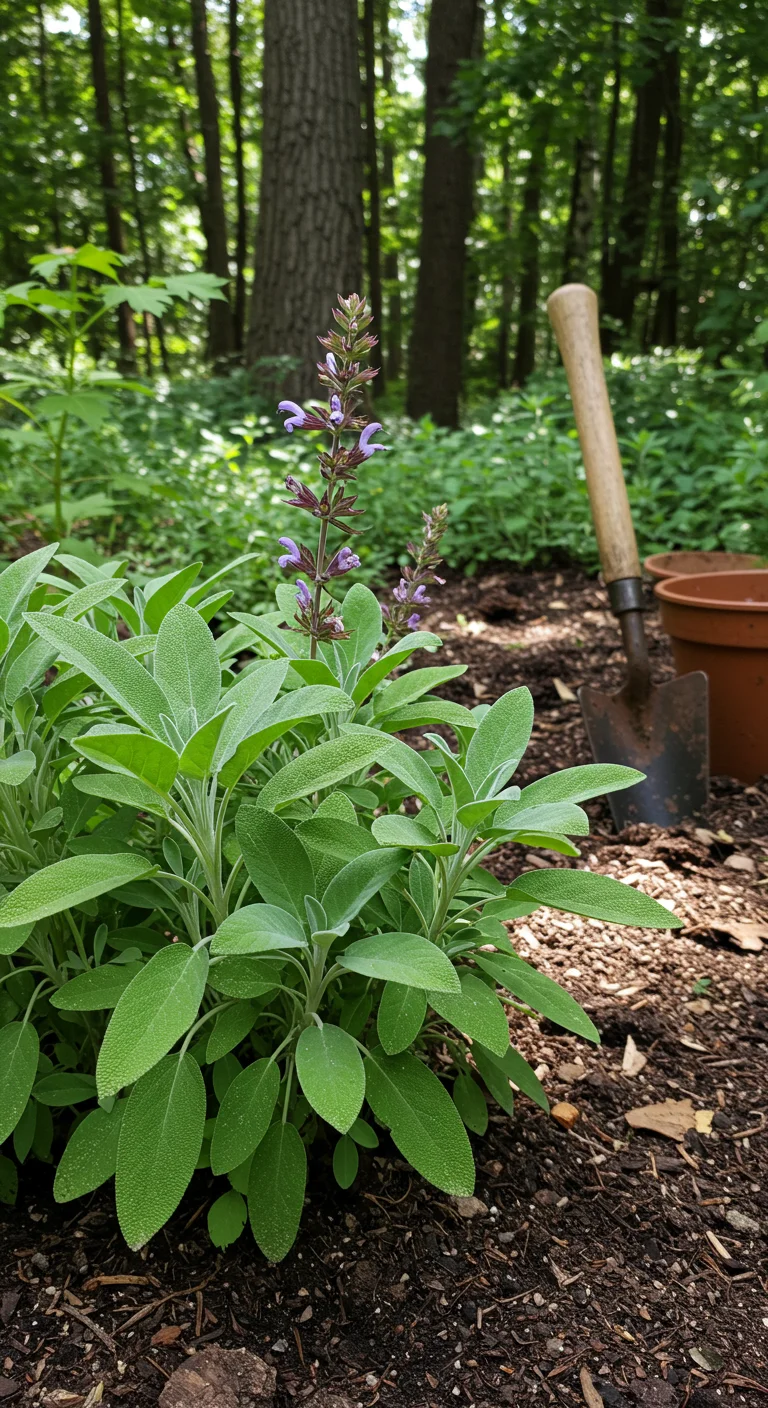
The Resilient Sage is a versatile herb that thrives in shaded areas, making it an excellent choice for gardeners with less sunny spaces. This semi-woody perennial prefers well-drained soil enriched with organic matter, so consider mixing in compost before planting. Sage can tolerate some neglect, but it will flourish with regular watering during dry spells. Prune the plant in early spring to promote bushy growth and prevent woody stems. Harvest leaves frequently to encourage new growth, and use them fresh in culinary dishes or dry them for later use. Additionally, sage can attract beneficial pollinators to your garden even in the shade, enhancing the biodiversity of your outdoor space.
15. Garlic Chives: The Perfect Blend of Garlic and Green

Garlic chives (Allium tuberosum) offer a delightful fusion of garlic flavor and the freshness of green herbs, making them a versatile addition to any shade garden. Thriving in partial to full shade, these hardy perennials are incredibly easy to grow, requiring minimal care and well-drained soil. Their slender, flat leaves can be harvested throughout the growing season, and both the leaves and delicate white flowers are edible, adding a burst of flavor to salads, stir-fries, and garnishes. Rich in vitamins A and C, garlic chives not only enhance culinary dishes but also contribute nutritional benefits. Additionally, they attract beneficial pollinators while deterring pests, making them an excellent choice for organic gardeners looking to maximize their yield in less sunny spots.
16. The Elegance of Bergamot: A Flowering Herb for Shady Areas
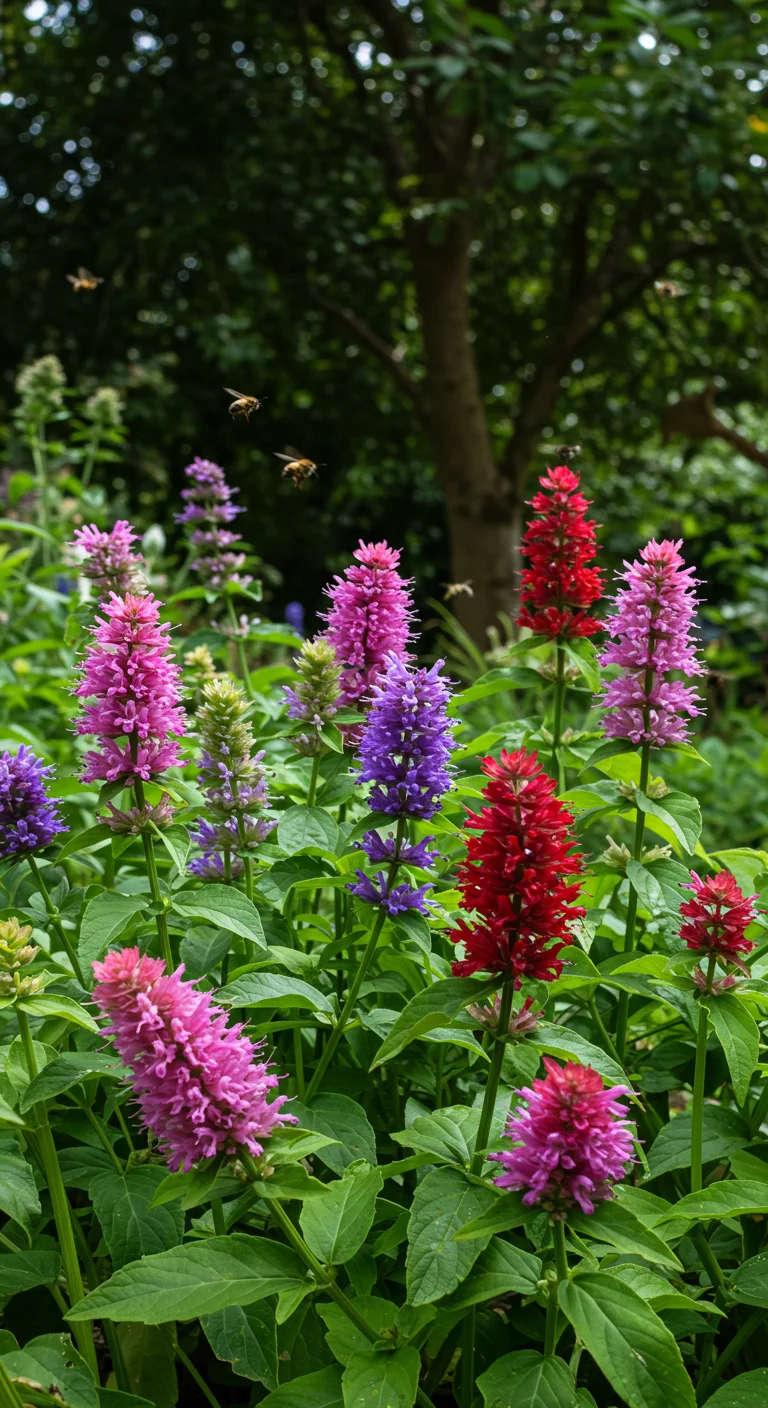
Bergamot, also known as Monarda, is a charming flowering herb that thrives in shady areas, making it an excellent choice for less sunny gardens. This perennial not only adds vibrant color with its tubular flowers in hues of pink, purple, and red, but it also attracts pollinators like bees and butterflies, enhancing the overall biodiversity of your garden. Bergamot prefers moist, well-drained soil and can tolerate partial to full shade, making it suitable for those tricky, dimly lit spots. In addition to its ornamental value, the leaves of bergamot are aromatic and can be used to make herbal teas or to infuse flavors in culinary dishes. With its resilience and beauty, bergamot can transform shaded areas into lively, fragrant retreats.
17. The Refreshing Aroma of Basil: Shade Tolerant Varieties
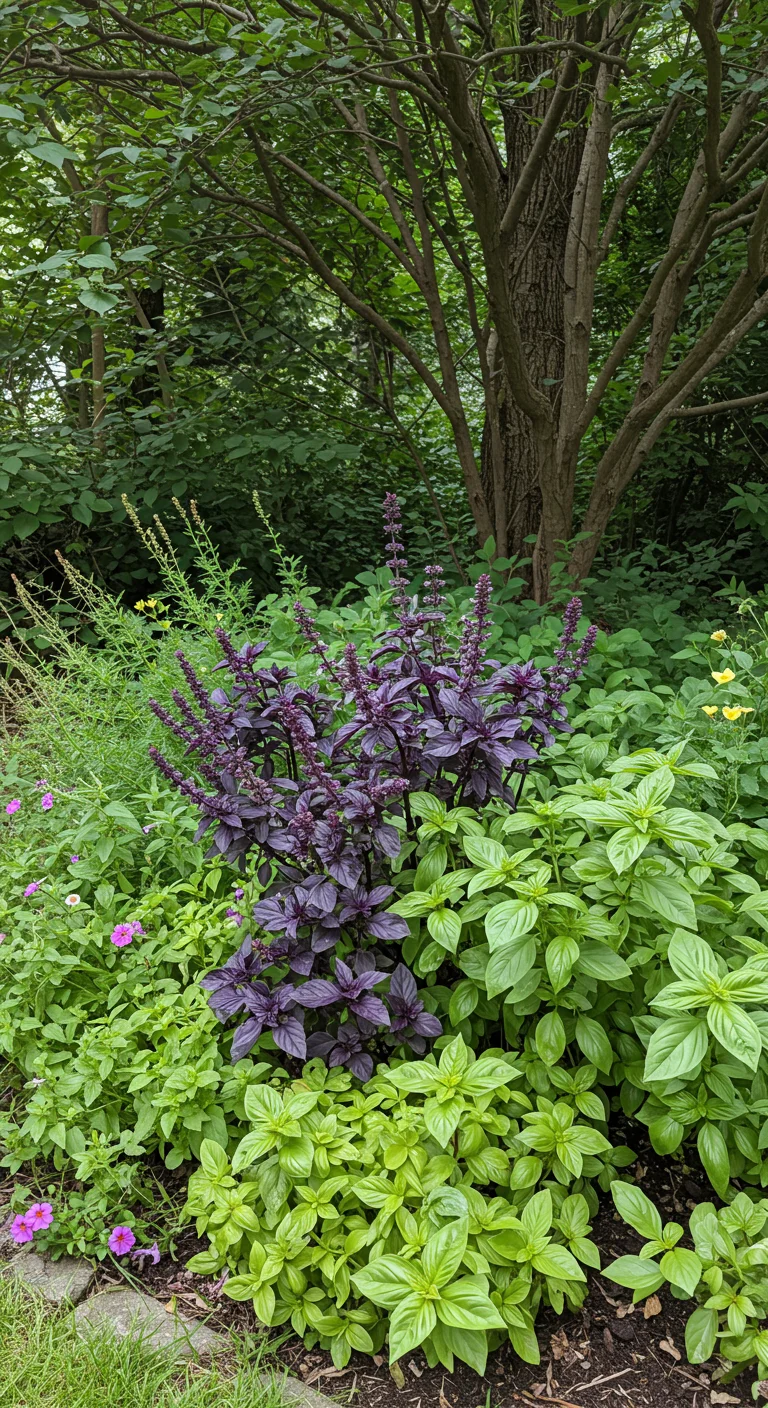
Basil is renowned for its aromatic leaves and is a favorite in many culinary dishes, but did you know that some varieties can thrive in shade? Varieties like ‘Dark Opal’ and ‘Thai Basil’ are more tolerant of lower light conditions, allowing gardeners with less sunny spots to enjoy their fresh flavors. When planting these shade-tolerant basils, consider providing well-drained soil and regular watering to keep the plants healthy. These herbs not only add a delightful fragrance to your garden but also attract beneficial insects, enhancing biodiversity. Harvesting basil regularly encourages bushier growth and more robust flavor, making it a rewarding addition to any shaded garden space.
18. Winter Savory: The Herb That Brings Flavor to the Shade
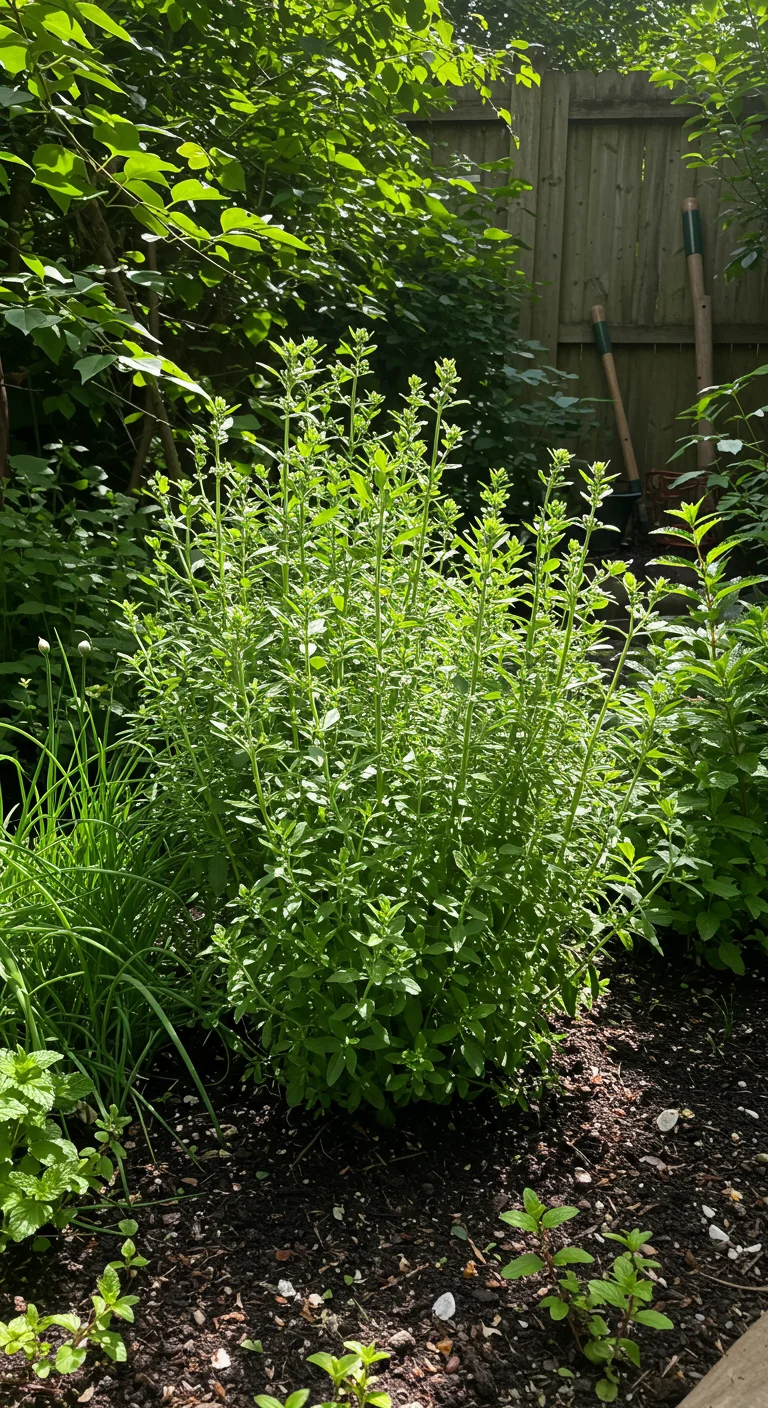
Winter savory (Satureja montana) is a robust herb that thrives in shaded areas, making it an excellent addition to less sunny gardens. This perennial herb offers a peppery flavor that enhances various dishes, from meats to vegetables, and it can be harvested year-round. Winter savory prefers well-drained soil and can tolerate some drought, making it relatively low-maintenance. It reaches a height of about 12 to 18 inches and produces small, delicate flowers that attract pollinators, adding beauty to your garden. When grown in partial shade, winter savory retains its aromatic qualities, providing a delightful culinary experience even in less-than-ideal sunlight conditions. Consider planting it alongside other shade-loving herbs for a diverse kitchen garden that flourishes in the cooler, dimmer spots of your yard.
19. The Versatile Nasturtium: Edible Flowers and Leaves in Shady Gardens
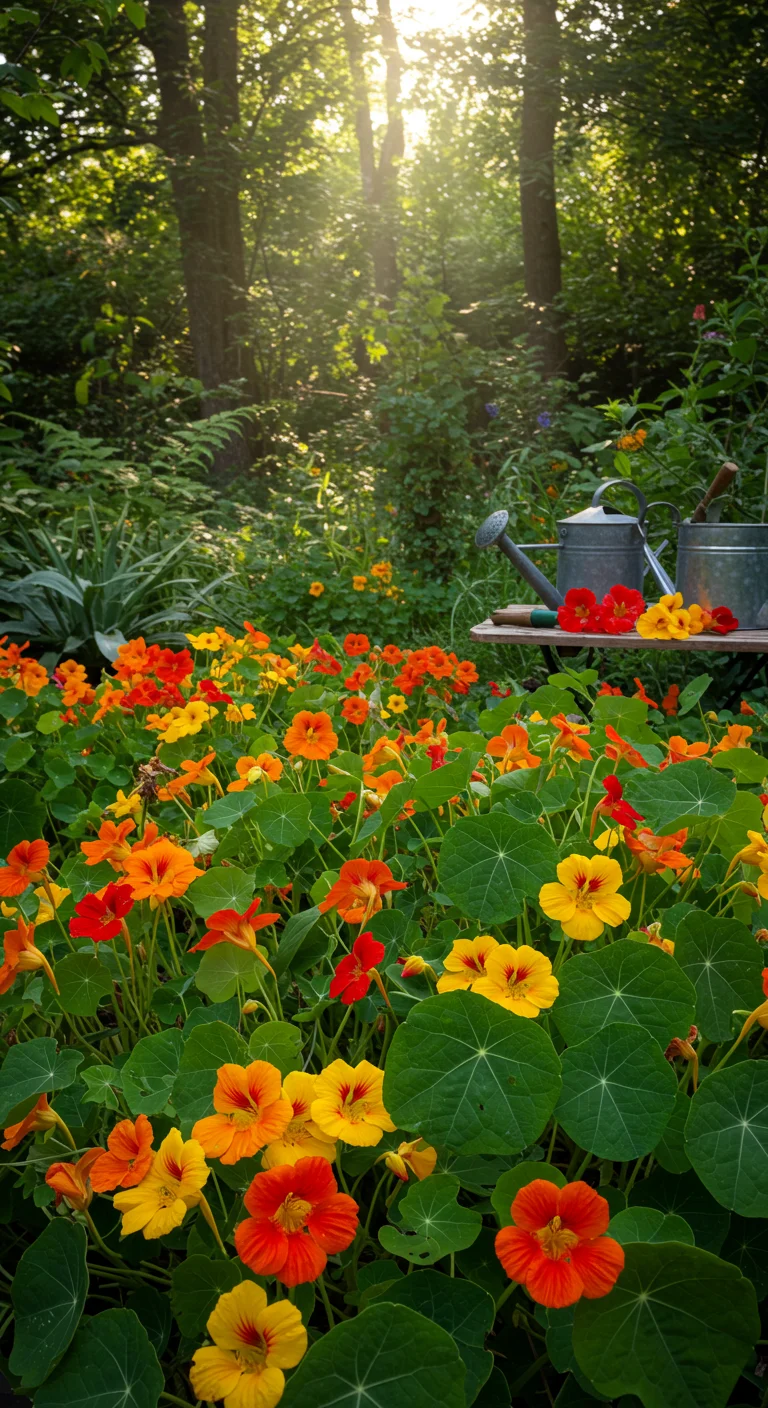
Nasturtiums are an excellent choice for shady gardens, thriving in partial shade while offering an array of edible flowers and leaves. These vibrant plants not only add a splash of color with their bright orange, yellow, and red blooms but also provide a peppery flavor to salads, sandwiches, and garnishes. They are low-maintenance, easily self-seeding, and can tolerate poor soil, making them perfect for less sunny spots. The leaves can be used as a spicy addition to dishes, while the flowers can serve as a beautiful and tasty decoration. Moreover, nasturtiums attract beneficial pollinators, enhancing your garden’s ecosystem even in the shade, making them a versatile and practical addition to your herb selection.
20. The Medicinal Wonders of Catnip: A Shade-Loving Herb
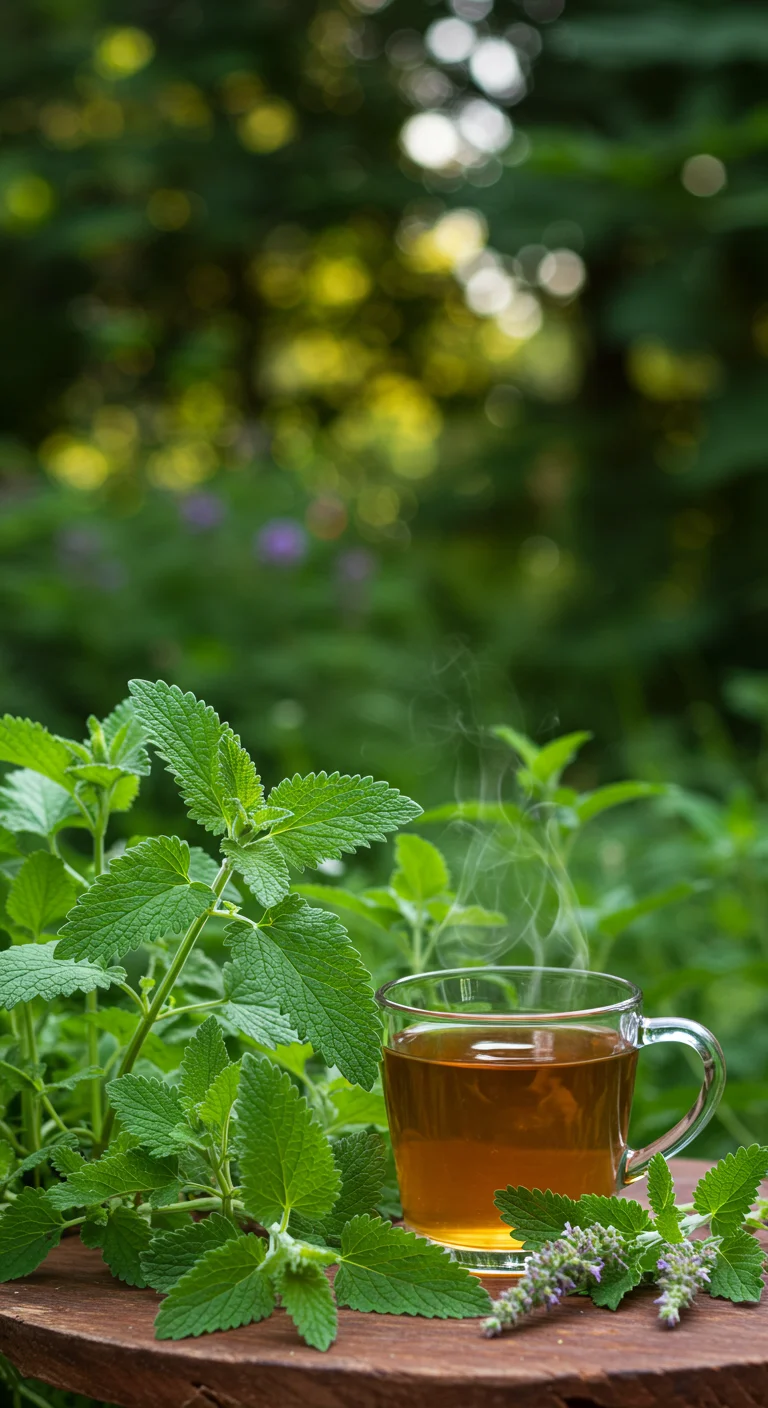
Catnip (Nepeta cataria) is not only a favorite among feline friends but also a remarkable herb with medicinal properties that thrive in shaded areas. This hardy perennial can grow well in partial to full shade, making it ideal for less sunny gardens. Traditionally, catnip has been used to treat various ailments, including insomnia, anxiety, and digestive problems. Its leaves can be brewed into a soothing tea that promotes relaxation and helps with sleep. Additionally, catnip possesses mild antiseptic qualities, which can be beneficial for minor cuts and scrapes. When planted in a shaded spot with well-drained soil, catnip can be a low-maintenance addition to your garden, providing both beauty and medicinal benefits for those looking to harness nature’s healing powers.
21. The Unassuming Plantain: A Nutrient Powerhouse for Low Light
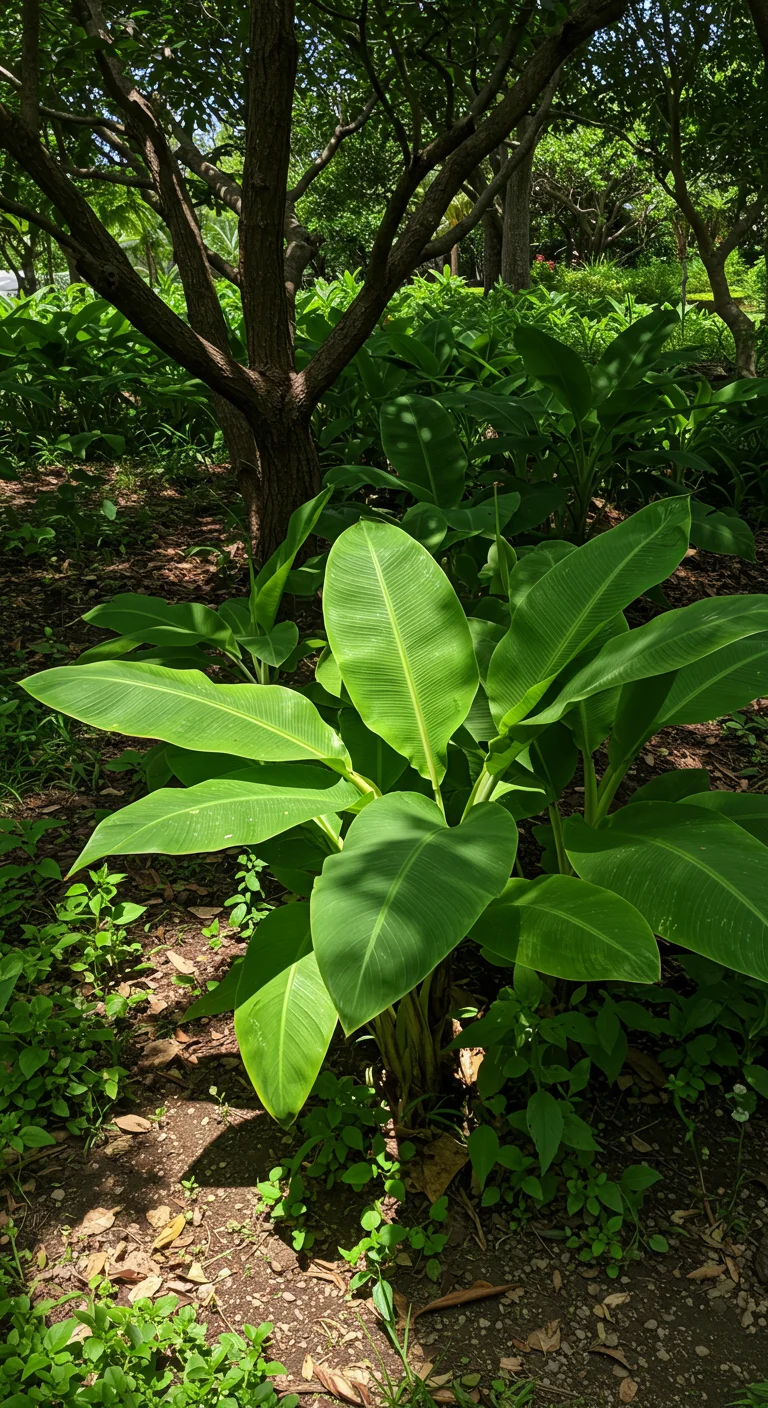
The unassuming plantain is often overlooked in gardens, yet it thrives in low-light conditions and offers a remarkable nutritional profile. Rich in potassium, vitamins A, C, and B6, as well as dietary fiber, plantains can be a valuable addition to any shade garden. They not only grow well in partial to full shade but also contribute to the soil’s health by acting as a natural mulch, suppressing weeds, and preventing soil erosion. When planted in clusters, their broad leaves create a lush, green tapestry that enhances the aesthetic appeal of shaded spaces. Additionally, the young plantain leaves can be harvested and used in various culinary dishes, making them both a practical and nutritious choice for gardeners looking to maximize their shaded areas.
22. Ground Covers Galore: Herbs That Double as Beautiful Foliage
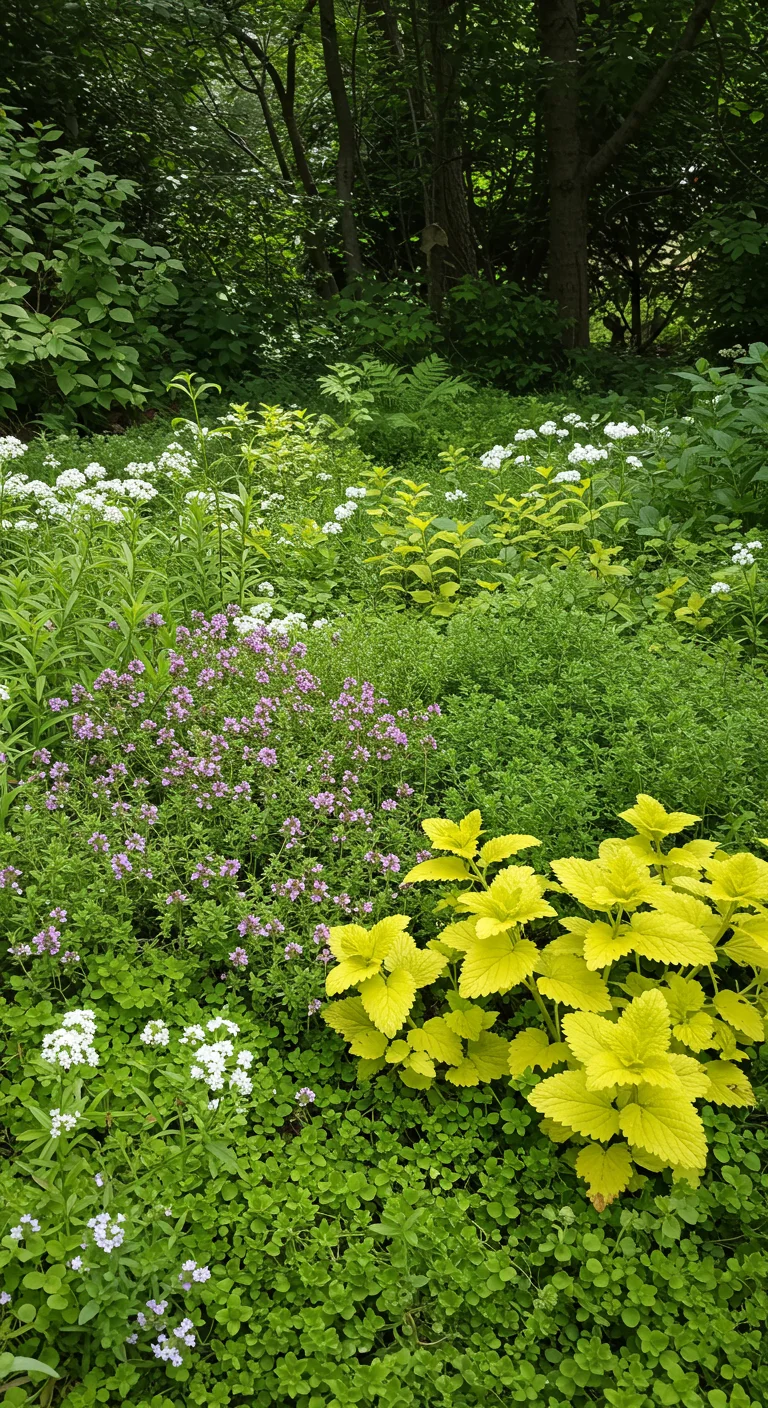
When considering herbs that not only thrive in shady conditions but also add aesthetic appeal to your garden, a variety of ground covers come to mind. Varieties like creeping thyme, which features lush green foliage and delicate purple flowers, can provide a soft carpet effect while releasing a pleasant fragrance. Another excellent choice is sweet woodruff, with its star-shaped leaves and delicate white blooms, creating a charming underfoot display. Additionally, the vibrant foliage of golden lemon balm can brighten dim areas, while the low-growing tarragon adds a touch of elegance with its slender green leaves. These herbs not only enhance the beauty of your garden but also serve culinary purposes, making them practical additions to any shady landscape.

